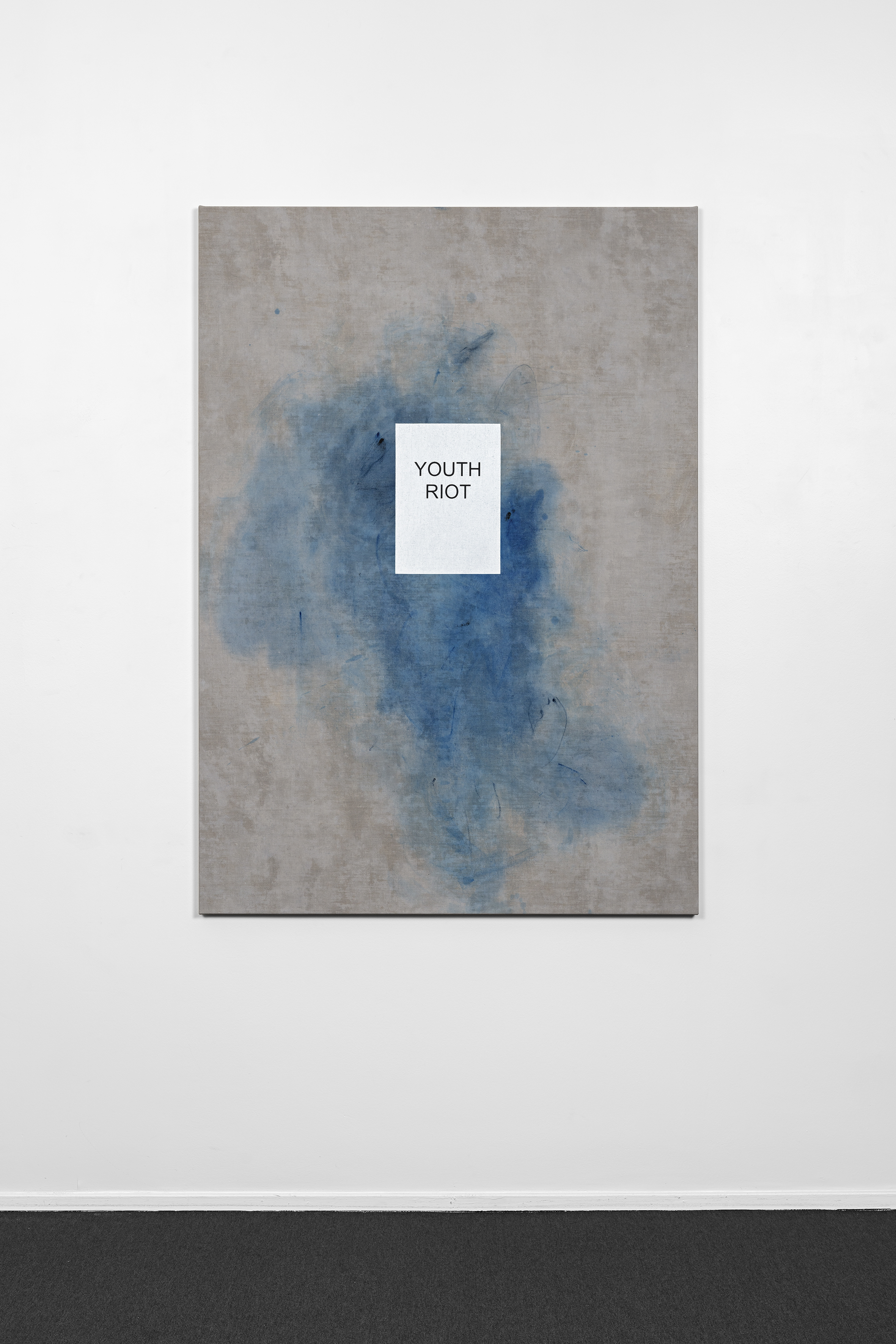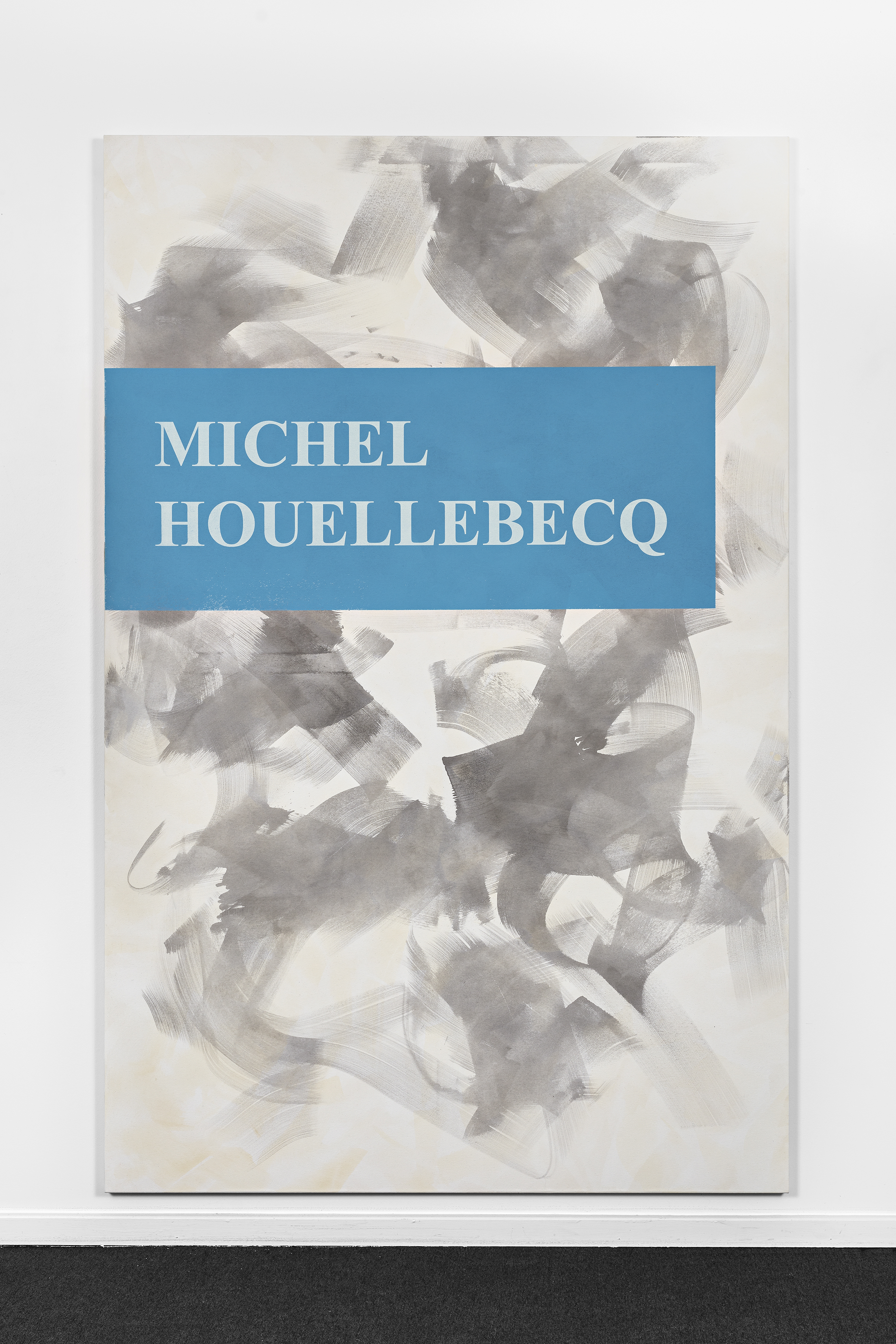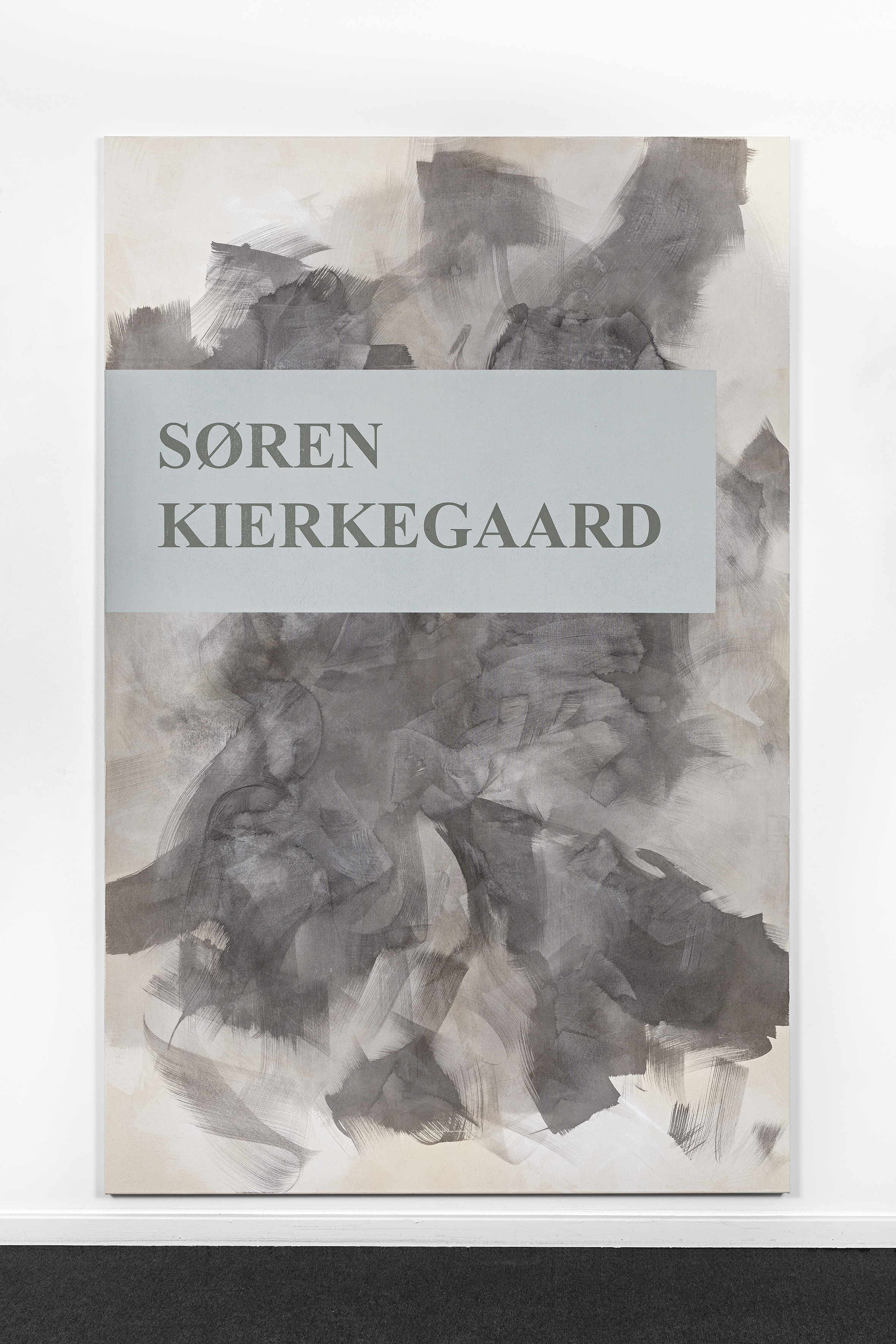
Abstract painters don’t really need reality, but in our current times, it is hard to ignore the world, even if you remove yourself as far from it as possible. Blytt’s new paintings look like posters, or book covers, so that when you seem them first—on a screen, in most cases—they don’t seem to be what they are. Is abstract painting becoming self-conscious? It just might be.
Part of Blytt’s latest exhibition, titled simply Eight Paintings, at iconic Norwegian arts institute Galleri K, Oslo, Blytt pushes abstraction towards a new understanding, considering the sublimation of surfaces in the current age, and how those surfaces contain and distort meaning.
This is one of your biggest exhibitions to date. How have you prepared for it?
As you say this is an important show for me, on many levels, so for this exhibition I’ve more or less lived in my studio for six months, only seeing my family in late evenings and weekends. I have a huge studio in an old paper factory just outside Oslo, big enough for not going crazy when staying there for several days.
Besides working with the paintings in my studio I got the Norwegian art critic Erlend Hammer to write an essay for the show and it was produced as a book on the works, so it’s been a lot of things at the same time. Working with Galleri K is a big deal for me because of their history of showing European painting in Oslo (Kippenberger, Oehlen, Majerus, Förg etc.).

You are presenting eight paintings that explore the idea of a painting as a vessel. Can you tell me more about this?
This vessel or “vesselness” you refer to is a term from the essay I mentioned produced for the show by Erlend Hammer. He tries to describe the works in the show as something more than self-referential paintings I think, but more like vessels that transport all kinds of different information. Like the ethos, the pathos and the logos of a painting, or something, does that make sense?
As Erlend points out, contemporary painting has maybe suffered under a too narrow understanding lately, where the messages the paintings may wish to transmit disappear from the conversation and meanings goes up in smoke.
One of the works responds to a signed photo of Angela Merkel that you bought on eBay…
I’m interested in Angela Merkel as a symbol of a historical important moment in European history, and I kind of like the idea that the actual signature on the front of the painting is by her hand, not by mine. But I would never have incorporated this signed photo into the work if it did not work painterly, she wears a burgundy jacket which speaks with the burgundy background, burgundy on burgundy. Maybe all this together is the vesselness Erlend talks about?

You’ve also introduced text in a much more bold way in these works. In the last paintings of yours I saw, you were looking at economic newspapers, but still, they were not so visible. What do you intend with this more brazen use of text against the abstract atmosphere of your paint?
In the earlier works you refer to I was working more abstract with the text, toned down, and the “textual message” in the works was harder to get, but now it felt right to use the text as text. One series of paintings in the show are inspired by book covers, so it is natural with text on top of the backgrounds. In other work like Bread and Roses and Youth Riot the text is painted to look like A4 sheets of paper glued on the painting. I wanted a direct appearance for the text in these works.
You had a son since I last saw you, has this changed your approach to your art?
No big changes I’m aware of to be honest, except the obvious things: at the moment, one big wall in the studio is dedicated to a small photo of him, as a reminder.
‘Eight Paintings’ shows at Galleri K, Oslo until 23 April gallerik.com. All images Courtesy of Galleri K, Oslo. Photography Vegard Kleven.






